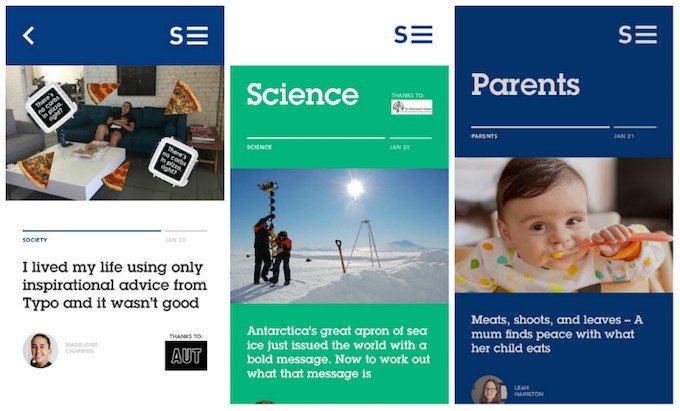
Last year, Facebook rolled out algorithm changes to its newsfeed that prioritised posts from the user’s friends and family and reduced the number of posts by brands and organisations. It was a move celebrated by users who use the site as a means of connecting with people, but it sparked alarm bells for publishers who used Facebook as a distribution channel.
“It made us think about how tenuous our relationship with our audience was if Facebook was the only method of engaging with them, or by far the dominant,” says The Spinoff editor and publisher Duncan Greive.
Greive has found that readers who predominantly consume The Spinoff’s content on mobile via social media are missing stories that would have a real resonance with them. And while the option remains for publishers to pay Facebook to boost its posts and increase reach, he says that money could be used to cover another journalist’s full-time salary.
That’s when the cogs started turning for Greive and he made the decision to give The Spinoff its own distribution channel with an app, which would give the editorial team complete control of story distribution.
So far, readers have been open to the idea, downloading the app nearly 700 times and taking it to the top spot on both the iOS and Android app stores.
Greive hopes it will reach 1,000 downloads by the end of this first week, which would be a great number—especially considering the app costs $5.99.

Greive carefully considered whether to put a price on the app, and decided it was the best way to recover some of the development costs that went into the project.
He also says that he doesn’t expect all Spinoff readers to download it.
“It’s not for the occasional Spinoff user,” he says.
“We want it to be for top 20-25 percent of users who are really passionate about the work we do, but they’ve got a way of engaging with us on a much more frequent basis.”
Greive considers the willingness of consumers to pay for the app to be unique in this market, and questions the ability of other media outlets to drive the same numbers with a paid app.
He adds that this should not be understood as a move by The Spinoff toward charging consumers for its service.
“We’ve said that we’d never put up a paywall and charge for access to The Spinoff, but we [are comfortable] giving readers the opportunity to contribute to what we are doing.”
He also says those who’ve made the commitment by downloading the app get to preview the new look that will be rolled out on the site in the next few months.

However, one thing it has made clear to purchasers is that the app will be free one day and it’s currently working to find a sponsorship partner for it.
Using sponsorship rather than display advertising is a business plan already seen in great success on its website as Flick Electric Co, Kiwibank, Bigpipe, Unity Books, AUT, Spark and Lightbox appear alongside stories. Greive hopes a sponsor for the app would be interested in technology and would want to contribute to its growth.
He says it doesn’t consider the app to be finished at this stage, but is happy with the response it’s had so far.
“It felt like we’re saying we aren’t content to be a small business, we want our voice to get louder and our reach to expand and our audience to grow’ and this felt like a powerful signal that we’re in it for the long haul and want to be a significant piece of the New Zealand media landscape.”
Keeping people interested in the app will, however, prove a challenge. A US study conducted by Research Now found that only around three percent of apps retain active users after the first 30 daysand that the average user only uses around six to ten apps over a longer period of time.
Sailthru iOS app developer Sam Jarman previously told StopPress that the trick to a successful app lies in its utility and ability to add value to the consumer’s life.
“I only want to interact with apps when the app is core to their bottom line,” Jarman said in the interview. “If the company values its app, it’ll value me as the user.”
Given Greive’s interest in reducing spend on Facebook, the app could eventually become core to TheSpinoff’s bottom line. However, it’s still early days, and 700 downloads isn’t likely to have a big impact on the current social media distribution strategy, which delivered The Spinoff an audience of over 500,000 readers in November last year.
The Spinoff’s growth and popularity indicate that the publication meets Jarman’s utility requirement in terms of giving customers something that they want. But the graveyard of well-intentioned apps is expansive enough to make even the most optimistic observer pause before predicting outright success.




